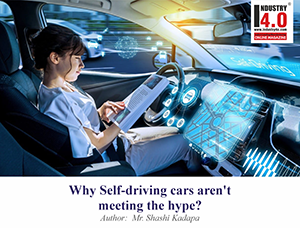How Israel and other nations use AI in Wars
Israel used AI in its war very effectively. Read how …
War in the current metamodernism era is now transformed into a dynamic hypermodern AI era. The ongoing wars in the Middle East and the war in Europe are driving the increased application of Artificial Intelligence. Also known as Algorithmic War, AI is used for intelligence gathering and processing, precise target selection, and elimination.
AI has introduced terms like kill chain, kill cloud, and kill lists as part of war strategy. How far has AI advanced in controlling and directing war? What are the tools ‘The Gospel’, ‘Lavender’, ‘Where’s Daddy’, ‘Depth of Wisdom’, ‘Nimbus’, the Alchemist’, and ‘KingFish,’ used for? This article answers these queries and more.
 Introduction
Introduction
Hypermodern war is less about foot soldiers charging and fighting on battlefields. This will come later if missiles do not decimate battalions. Something much more systematic and malevolent has emerged. Ishmael Bhila speaks of Kill Chains, and Kill Clouds that engulf the world in the global war on terror.
In the postmodern era following the Iraq war in the early 1990s, Kill Chains dominated the strategy. Kill chain was about setting a chain of ‘seek and destroy’ enemy targets and individuals. Cell phones and computing systems were still nascent, and intelligence gathering was through traditional methods, radio and POTS – plain old telephone systems. Analysis of ‘tons of data was part automated and manual, onerous, and targeted missions were challenging.
Note – The actual AI systems used by defense forces are highly confidential. The discussion is based on inputs from peer-reviewed resources.
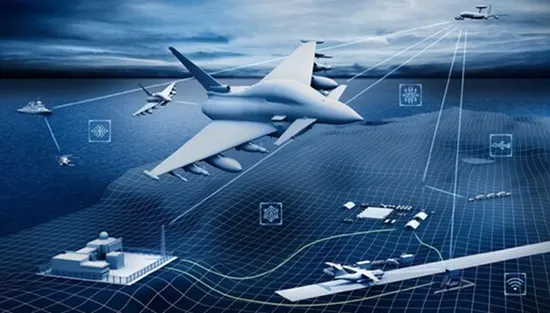
Image Credit: Airbus
The approach and strategy as of 2023 onwards with the Kill Cloud system. The Disruption Network, a group of AI scientists and whistleblowers explain the details. Kill Cloud is a network of cloud infrastructure powered by AI systems that utilize multiple methods, including drones and cellular phone triangulation, to locate, identify, and eliminate targets, remotely with guided missiles. Israel used this very effectively in the Gaza and Iran wars, and the US used this to take out an Iranian General in 2020.
Jane reports that HIS, a group comprising Helsing, IBM Deutschland, and Schönhofer is tasked with building FCSA – Future Combat Air System. This system features an AI backbone connected to the air, land, and sea defense system. Called Combat Cloud, it is designed to protect the EU from possible aggression. FCSA is built with AI controllers connected to unmanned remote carriers and platforms that act as effectors, sensors, and Command and Control (C2) nodes. The system with an open architecture allows for collaborative combat where each munition and team communicate with other units to form an effective Kill Cloud.
The following sections discuss various AI technologies and systems used in hypermodern war.
The Art of AI in War
Israel has used AI very effectively in identifying and targeting individuals and facilities considered dangerous. At the same time, the target Gaza area is approximately 365 sq kms, with about 2.1 million people residing there resulting in a population density of roughly 6000/ sq km. Israel has not used ‘carpet bombing’ as seen in the WWs, but exact attacks that struck specific apartments and rooms in this packed place.
In the book, ‘The Human-Machine Team How to Create Synergy Between Human and Artificial Intelligence That Will Revolutionize Our World’ by YS, a Brigadier General of Israel explains the need for an AI machine to quickly process large data and identify targets when a war breaks out. It appears that The Gospel and other tools discussed later are a part of this system.
Now what role did AI play in this war
Use of AI in targeting
Chris Gray explains that Unit 8200, a part of Israel’s intelligence developed The Gospel, an AI tool used for identifying targets. The nation utilizes several AI tools for special tasks. The Gospel is an AI database tool, a much more effective upgrade of the Tzayad C3 system created in 2015. It is an AI version of Israeli officers who manually selected targets. In the postmodern war and under ideal conditions, about 20 Israeli personnel could find plausible 100 ‘maybe’ targets in 300+ days.
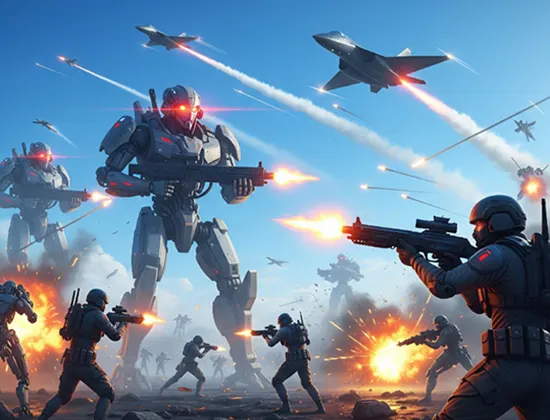
Image Credit: Shashi Kadapa with Google Gemini
The Gospel, on the other hand, can locate approximately 200 targets positively in densely populated townships in less than 10 days. The application identified and destroyed 10,000 targets in the Gaza war. Israel’s AI strategy encompasses various stages using multiple tools. The Gospel is linked with ‘Lavendar’ and ‘Where’s Daddy’ AI tools for intelligence gathering. The Gospel maps buildings and infrastructure, such as homes, buildings, and tunnels. Lavender maps suspect individuals, while Where’s Daddy follows targets by tracking their mobile phones and pagers, and alerts IDF when the targets go home.
Data Triangulation
Cell phone towers that facilitate mobile calls and text messages acted as data inputs for The Gospel. Joana Moll of the Disruption Network Institute explains how Ad Tech inadvertently gives information about targets to Israel. Ad Tech is about firms like Meta, Instagram, and many sellers who target users for promotions and Ads. The target population usually has their mobile phones on. Israel, at any instance, knew the location of specific individuals.
It is possible that when the bombing took out power systems, there was some gap in finding the location, and the last known location was targeted. Reports suggest that this method is rough and civilians who were not targets were also killed. According to The Guardian, IDF used Ad Tech data, 10-year-old Palestine census data, and advanced face recognition systems to profile people.

Image Credit: Shashi Kadapa with Google Gemini
Red Wolf, Blue Wolf and Wolf Pack are AI-powered face recognition systems that map 80 nodes of a face. Israel deploys the apps at Gaza checkpoints, airports, bus terminals, and other public places. Gaza activists had this habit of posing with their pictures on social media accounts. A person’s facial features are mapped in detail and fed into The Gospel along with their mobile number, home and office address. The mobile and pager numbers are then linked to identify the people with whom they have communicated. A network of contacts is built and stored using Lavender.
Lavendar and Where’s Daddy
Lavendar, Where’s Daddy are AI programs trained using machine learning algorithms on data of targets. The software uses an algorithm and gives a rating or score for the target. This assignment is based on the profile, contacts the system decides if the person is an activist. Israel Defense Forces – IDF then split the Gaza Strip into 620 blocks. The target individual had to essentially live and move within the Gaza Strip since they were not allowed to go out of the zone.
In the months and years available to the IDF, they created precise maps of Gaza activists, their homes, friends, and who they communicated with. More than 37,000 Gaza activists living in homes and located in tunnels were mapped. In many instances, some people who were not closely associated with activists were also flagged. People were bombed at night in their homes when they were with families.
IDF used dumb relatively low-cost bombs on junior activists destroying buildings along with the targets. Expensive missiles with precise targeting capability were used for higher-ranking officers. At the time of missile attacks, the IDF had to know the exact spot. This problem was solved with another deadly AI tool called Stingray.
Stingray Devices
One of the main problems while tracking targets through mobile phones is that the cell tower is the sole controller of connections. Mobile operators have to obey a legal process when the govt wants them to monitor phones. This takes time and the operator can refuse or delay. This is where Stingray devices are used. They are also known as cell-site simulators and IMSI (International Mobile Subscriber Identity) catchers.
Versions of these devices have been available to law officers for several years, but the latest Stingrays with AI bring surveillance to a new level. These devices provide intelligence at this instance.’ This means they pinpoint your location as you are reading this sentence. These devices simulate a cellular phone tower for a few seconds, establish a connection to the target phone, and then break the contact, allowing the device to link with cell towers.
When the target phone connects to a Stingray, it harvests the IMSI number of the phone and checks against The Gospel data. If confirmation is received that the phone belongs to the target then the next steps are initiated. The precise location is mapped and the process is repeated after a minute to see if the target is moving or stationary. Suppose the target is moving in a car. Then satellite images are used to verify the high-resolution terrain map of the road, estimate vehicle speed, and then direct autonomous drones and missile launchers.
Controllers know the missile’s speed and with satellite based geographical positioning, they calculate the vehicles’ location of the car, and launch. In 2020, an Iranian general was taken out with this method when he was in a convoy. If the target is sitting in a location, then the process is simpler. Human soldiers are present to push the trigger and operate the drone if needed. AI handles all intelligence gathering, data analysis, identifying targets, and coordinates calculation. Stingray devices are briefcase size. They can be operated from a command vehicle and plugged into the vehicle’s cigarette lighter socket.
Several other devices are available for surveillance and are used by law enforcement since many years. The devices become very effective when connected to AI systems. Harpoons are signal boosters or amplifiers for Stingrays. KingFish and Gossamer are hand-held devices for tracking while walking. Triggerfish allows the interception and recording of conversations of over 60,000 cell phones simultaneously. Amberjack finds the direction of a signal. Hailstorm is an upgrade for Stingray and communicates with the cell tower to coordinate monitoring.
An important device is the Alchemist which sends real-time alerts to soldiers’ tablets of threats from the air, water, and ground. Depth of Wisdom was critical in tunnel mapping as it provided a complete picture of the network. Inside and above views were presented along with details of tunnel depth, gradients, thickness, height, and booby traps.
Microsoft Azure
All the above AI systems were hosted on the Microsoft Azure platform and internal servers. Azure is a Cloud-based Infrastructure as a Service (IaaS), Platform as a Service (PaaS), and Software as a Service (SaaS) platform. It offers tools and a development environment for AI-based computing, data analytics, and networking. Israel used Azure services to help its campaigns.
Israel has its capabilities and developed the analysis internally. It compared its results with those from Azure and OpenAI to verify the accuracy, and then a decision was taken to fire missiles or abort. There were protests and anger at Microsoft and OpenAI for letting Israel use the system to wage war.
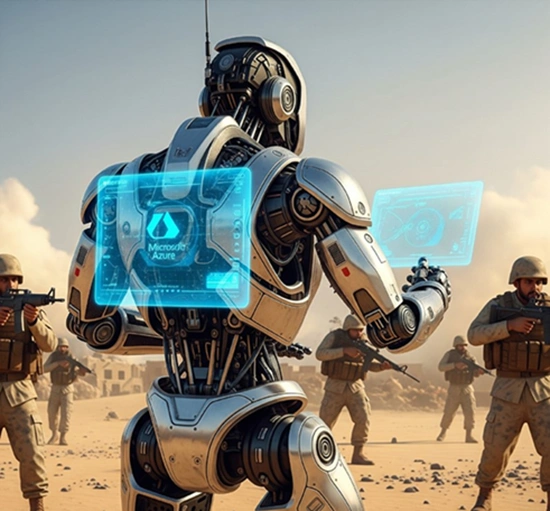
Image Credit: Shashi Kadapa with Google Gemini
Fully autonomous AI driven systems for threat identification and defense are under development. AI fully manages all systems. They are depicted in movies like Terminator, The Matrix, and M3GAN, where the AI is evil. However, AI learns behavior, and threat identification, from machine learning algorithms. If trained on biased data, then AI may turn malevolent.
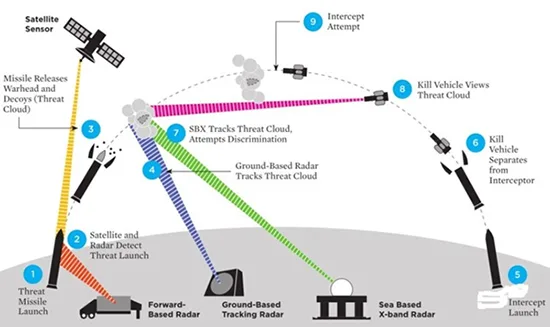
Image: Fully autonomous AI driven systems
Final thoughts
The article examined how hypermodern AI wars are waged. Recent wars in the Middle East saw extensive use of AI for information analysis, targeting, and delivering action. Invasions by Israel are limited and have not happened in Syria and Lebanon. All the fighting was done remotely. Israel targeted enemy offence infrastructure and key people, taking them out precisely.
It seems difficult to comprehend how remote personnel at workstations can do so much damage. This is modern war. It is better than carpet bombing and damage to other people, structures is less. More advances, faster and more accurate algorithms, data gathering and precise analysis are expected to make AI more ubiquitous, and deadly.
Disclaimer: The views, thoughts and opinions expressed in this article are those of the author and do not reflect the views or positions of INDUSTRY 4.0. The content is provided by the author as-is and is published solely for informational or educational purposes.
INDUSTRY 4.0 does not guarantee the accuracy, completeness or usefulness of any information presented and is not liable for any errors, omissions or outcomes resulting from the use of this information. The responsibility for the content lies entirely with the author.
Banner Image Credit: Shashi Kadapa with Google Gemini
About the author :
 Mr. Shashi Kadapa
Mr. Shashi Kadapa
Based in Pune, India, Mr. Shashi Kadapa is an engineer, MBA and has worked with leading IT and manufacturing firms. A multi-hyphenate, he has roles as a technical writer, and SEO content writer with a focus on IT and tech topics.
Creative fiction is his passion, and he serves as the managing editor of ActiveMuse, a journal of literature. His stories across multiple genres are published in more than 45 US and UK anthologies. His creative works
Mr. Shashi Kadapa can be contacted at :
E-mail | LinkedIn | Blog | Mobile : +91 7387492371
Also read Mr. Shashi Kadapa earlier article:




